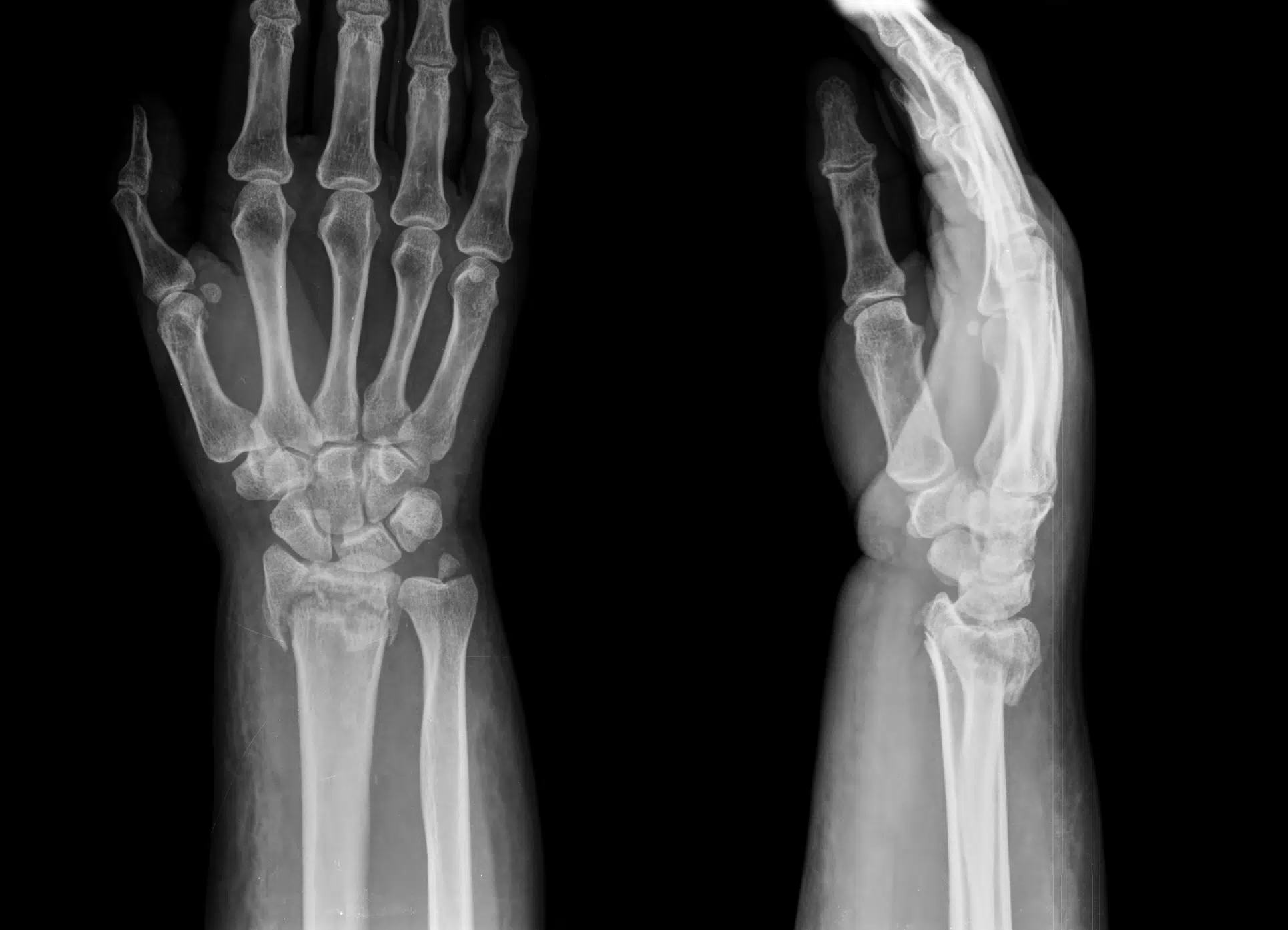A wrist fracture occurs when one of the bones in the joint breaks. Fractures of the distal radius are the most common, affecting the end of the forearm bone. The scaphoid, a small carpal bone, can also be broken, often as a result of a fall on the hand. These fractures are sometimes difficult to diagnose, and scaphoid healing is more difficult due to the poor vascularity of this bone, sometimes necessitating a surgery (screw compression). Fractures of the ulnar styloid are less common, but may accompany other fractures. The location and severity of the fracture directly influence the treatment of a wrist fracture.
Leman hand clinic
Wrist fracture
A wrist fracture is a common injury, often caused by a fall onto an outstretched hand. It can involve various bones, such as the radius or scaphoid, with varying degrees of severity. Depending on the nature and location of the fracture, treatment options can vary, from simple immobilization to more complex surgical interventions.

What is a wrist fracture ?
What causes a wrist fracture?
Fractures of the wrist are mainly the result of a forward landing on the hand. This mechanism is the most frequent cause of distal radius and scaphoid fractures. Road accidents, especially those involving motorcycles or bicycles, are another frequent cause. Contact sports or sports involving falls, such as skiing or skateboarding, also increase the risk of fractures. In the elderly, osteoporosis makes bones more fragile, increasing the risk of fracture even in the case of minor falls. Fatigue fractures can also occur. It usually results from repeated stress on the wrist, particularly in athletes or workers performing repetitive movements.
How is a wrist fracture diagnosed?
Symptoms of a wrist fracture include severe pain, swelling, and sometimes a visible deformity of the wrist following an accident. Loss of mobility and an inability to grip objects are also common signs. An X-ray is necessary to confirm the fracture and assess its severity. In the case of a complex fracture, such as a scaphoid fracture, a CT scan may be required for a more accurate diagnosis. These examinations help determine the appropriate treatment for the wrist fracture, whether it involves immobilization or surgical intervention.
Treatment of wrist fractures with immobilization
If the fracture is stable, immobilization is often sufficient. The wrist is held in place by a splint or cast for around 4 to 6 weeks. This immobilization allows the bones to consolidate properly. In the event of a fracture, the scaphoid requires longer immobilization, sometimes for 3 months. Radiological follow-up is essential to ensure proper progress. Sometimes, pins are used to stabilize fractures, as in the case of radial or ulnar styloid fractures. Once the cast has been removed, rehabilitation with occupational therapy helps restore mobility and strength to the wrist.
When to operate on a broken wrist
Wrist surgery is necessary when bone fragments are displaced, or for complex fractures such as scaphoid fractures. Fractured wrist surgery aims to realign the bones and stabilize them using anatomical plates, screws or pins.
Surgical treatment of a distal radius fracture involves fixation of the fracture with an anatomical titanium plate, allowing the bones to realign and consolidate in the correct position, as well as early rehabilitation to prevent stiffness.
Surgical treatment of a scaphoid fracture involves screwing the bone through a mini-incision in the wrist.
Dr. Bejic is an expert in the treatment of wrist fractures and will advise you on the best course of treatment, taking into account not only the fracture but also your needs and expectations (dominant hand, age, professional and sporting activities, etc.), to enable rapid recovery and avoid complications such as wrist osteoarthritis.